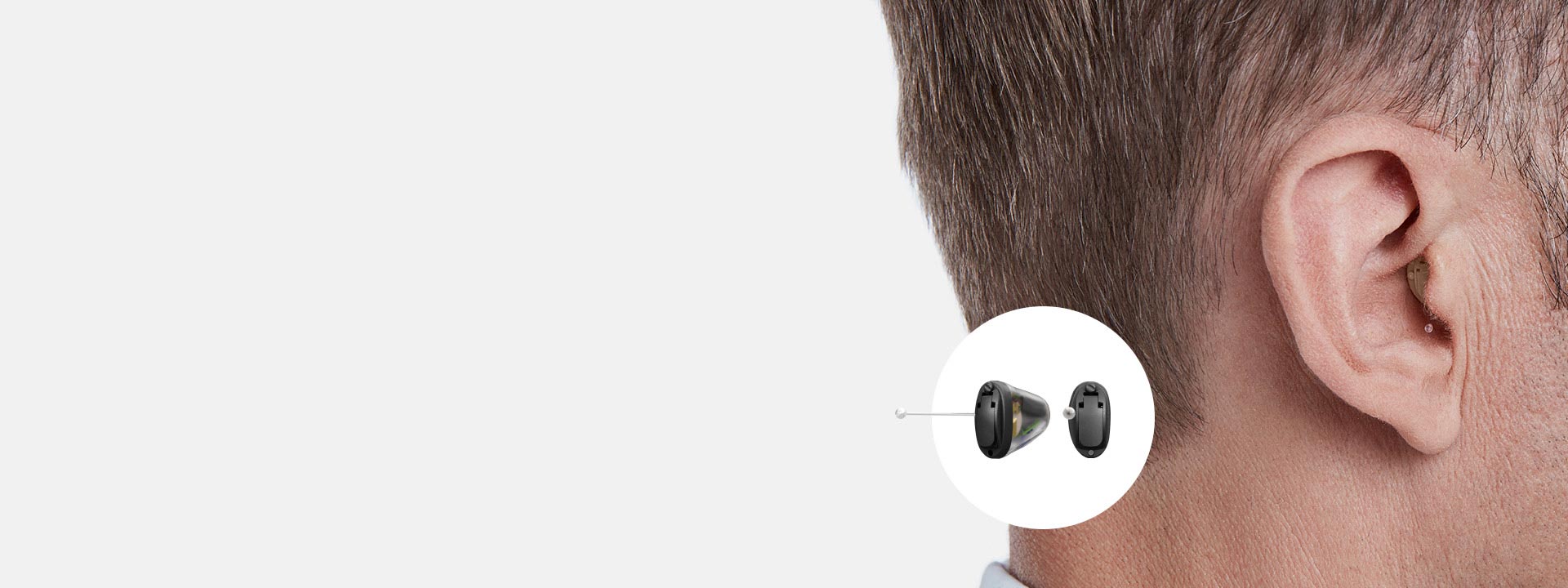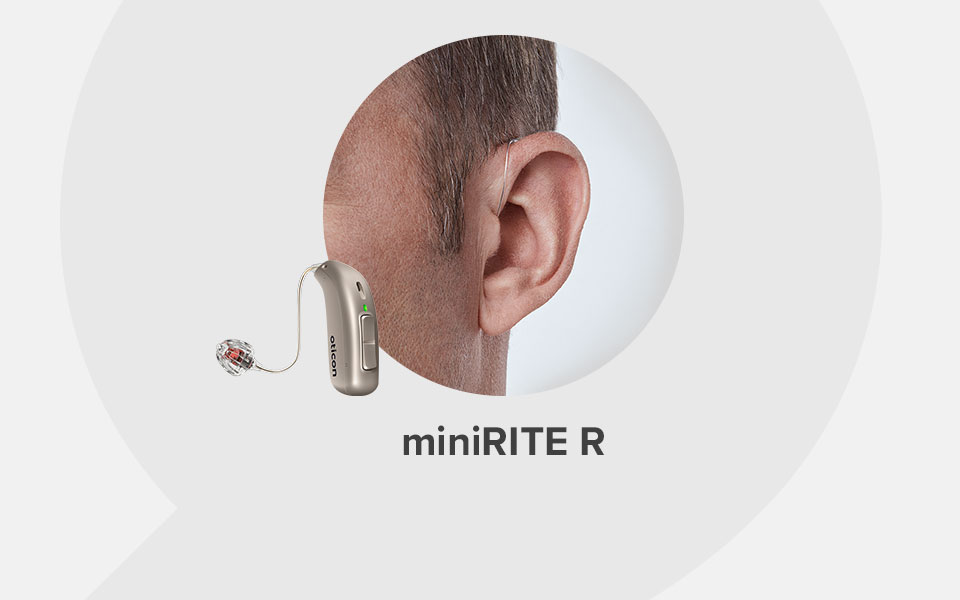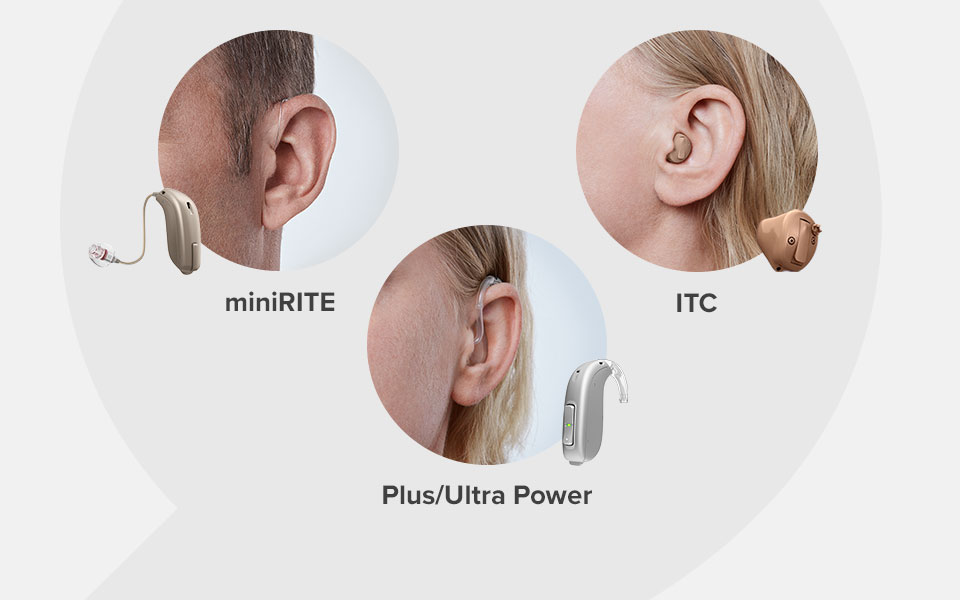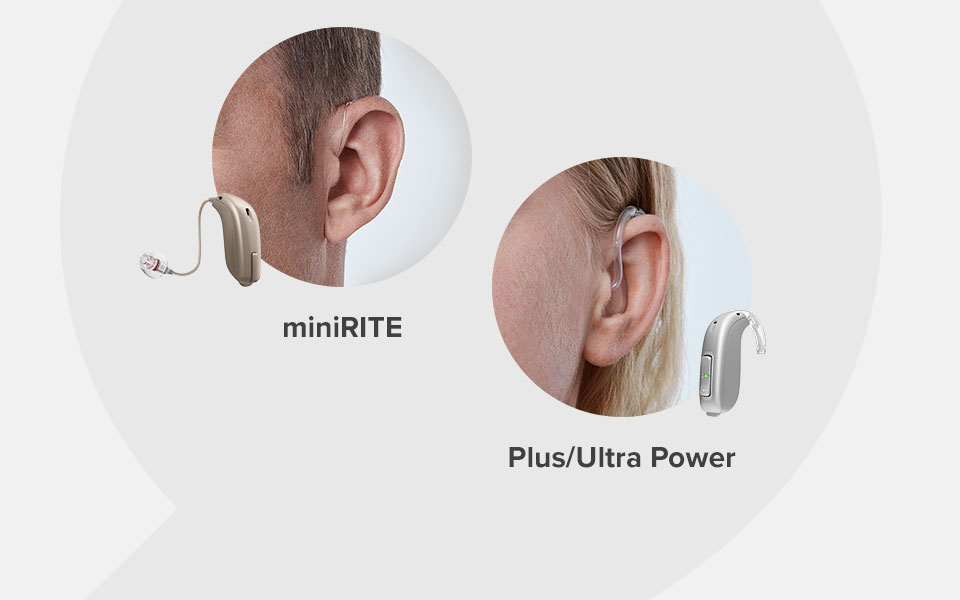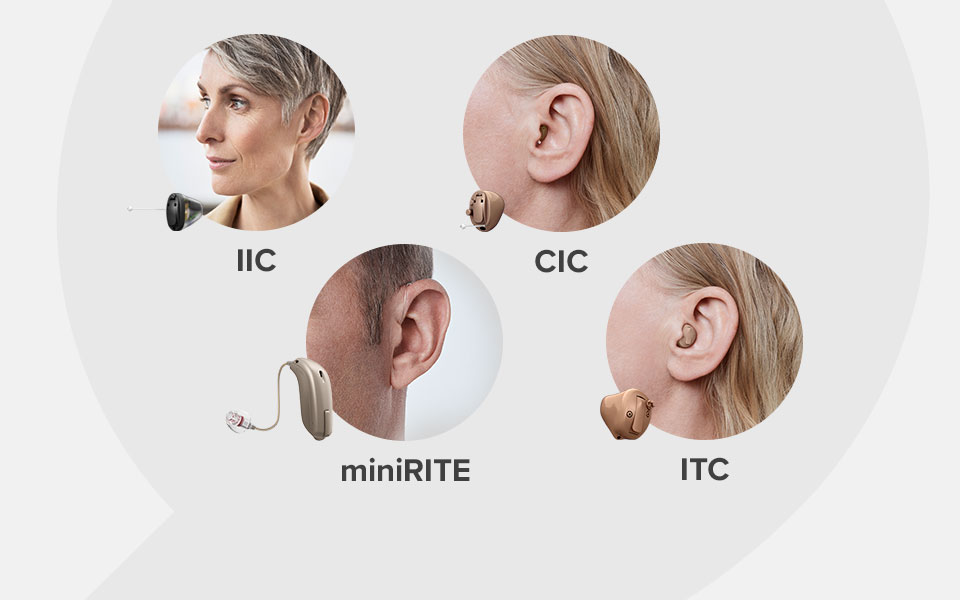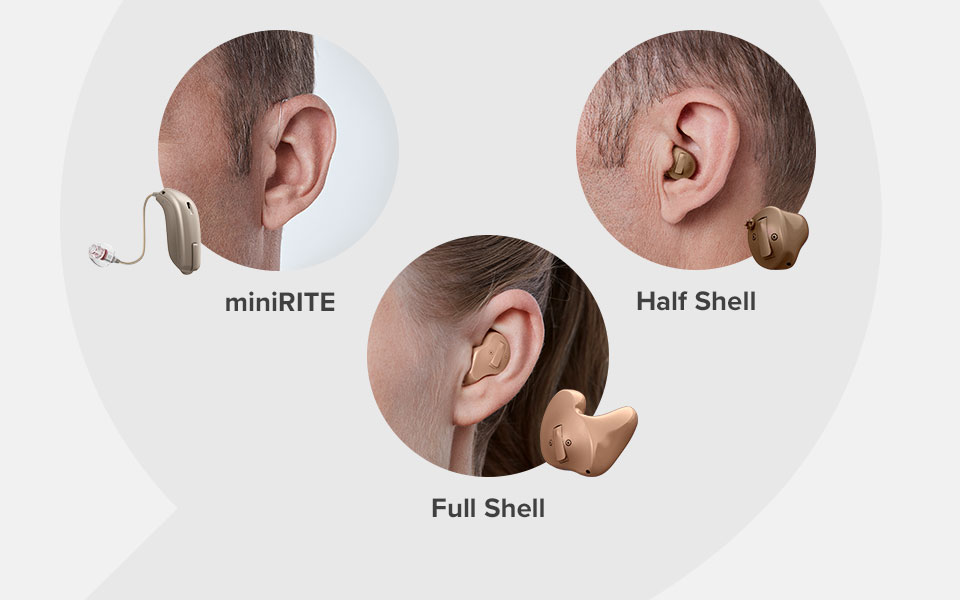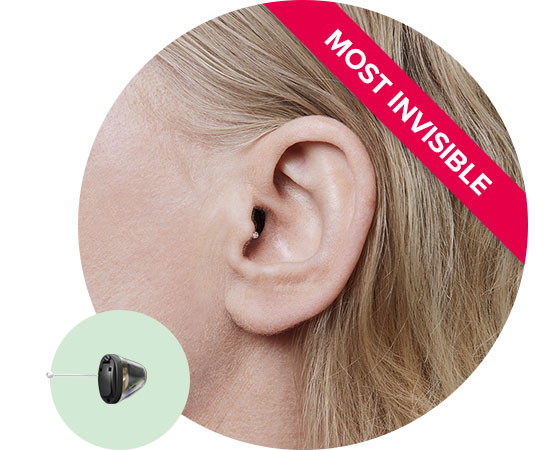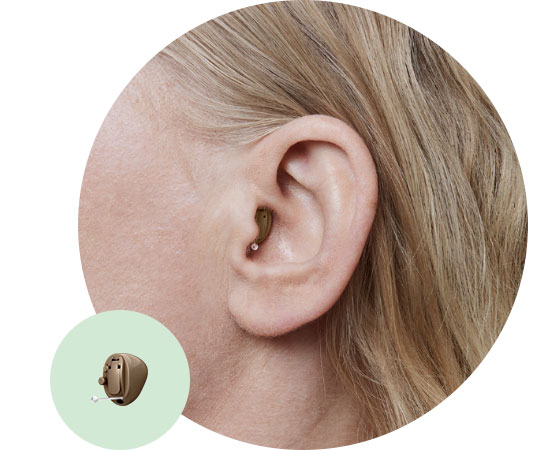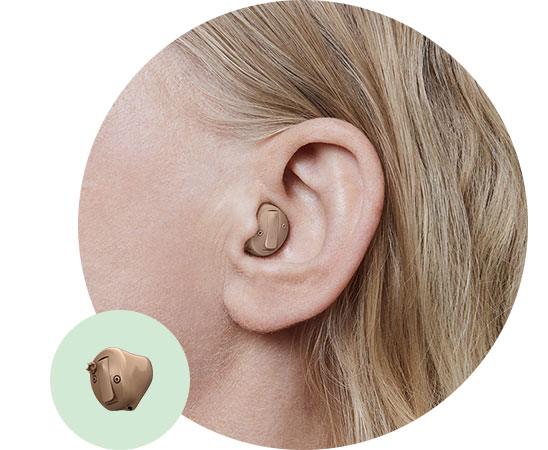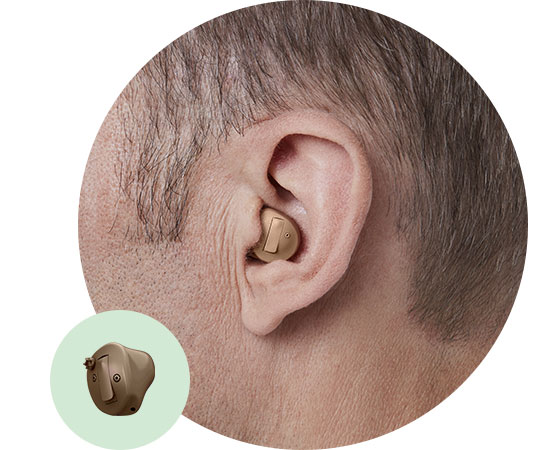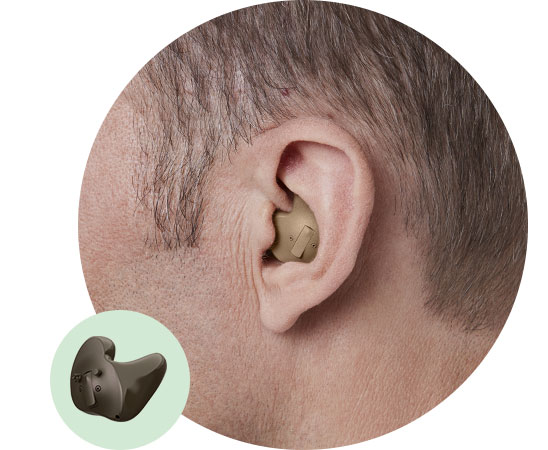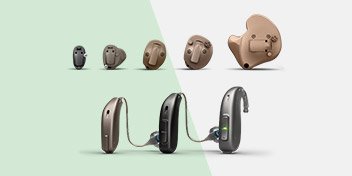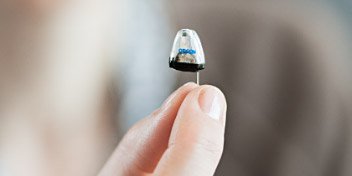What are in-the-ear hearing aids?
In-the-ear hearing aids (ITE) are the most discreet hearing aid styles available. They have no external wires or tubes visible, as opposed to behind-the-ear hearing aids. ITE hearing aids are all custom-made, ensuring both a perfect fit and a discreet look.
When you select an in-the-ear hearing aid, one of our hearing care experts will need to take an impression or scan the inside of your ear, for a personalised fit.
Hearing aid types

